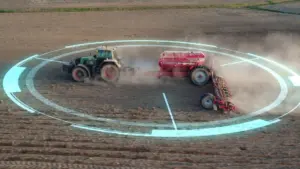NASA Joins the International Effort to Learn More About Norway’s Auroral Cusp
A solar wind of ionized particles from the sun is constantly blowing through the solar system. Earth’s only protection from this wind is its magnetic field, which emerges from the north pole, wraps around the earth, and re-enters the earth at the south pole. Mars has no atmosphere because, after it lost its protective magnetic field, the solar winds literally blew the atmosphere away. The earth’s active magnetic field is what keeps the same thing from happening here, and life disappearing from earth.
Near the poles, however, where the magnetic field bends in toward the earth, the solar wind can come into contact with the atmosphere, heating up the atmosphere and causing the auroras as the ionized particles bombard air molecules. According to Eureka Alert!, “North of Norway over the Norwegian and Greenland Seas, the magnetic bubble surrounding the Earth dips inward, allowing space particles to funnel in toward the planet.” This cusp, where energy from the solar wind “heats the atmosphere by hundreds of degrees,” is actually visible to the naked eye in November and December.
This is why “eight missions with 11 rockets will launch from two sites in Norway—Andøya Space Center and Svalbard Rocket Range” around this time in 2018 and 2019. “The first mission—a NASA mission called the Auroral Zone Upwelling Rocket Experiment, or AZURE—launches in March 2018.” NASA will also launch “the Visualizing Ion Outflow via Neutral Atom Sensing-2 experiment or VISIONS-2” in December 2018. There will also be the “Norwegian Investigation of Cusp Irregularities-5 or ICI-5 mission in December 2019.”
The Eureka Alert website further explains, “In addition to AZURE, VISIONS-2 and ICI-5, other NASA Grand Challenge missions are the Twin Rockets to Investigate Cusp Electrodynamics or TRICE-2 (led by the University of Iowa, launching December 2018), The Cusp Alfven and Plasma Electrodynamics Rocket or CAPER-2 (led by Dartmouth University, launching January 2019), and the Cusp-Region Experiment or C-REX 2 (led by the University of Alaska, launching November 2019), which also includes three Canadian instruments from the University of Calgary (also flying on VISIONS-2).” Furthermore, “The Japan Aerospace Exploration Agency (JAXA) will fly the SS-520-3 in January 2019, which investigates the ion outflow mechanism in the cusp.”
The next year will be exciting for both atmospheric and space science at the international level. By learning more about this unique feature in our atmosphere created by the earth’s magnetic field, we will learn more about the solar wind, how the solar wind interacts with the atmosphere, and how our magnetic field protects life on earth. So, stay tuned to science news over the next several years as new data surfaces and more knowledge about the cusp is created.








